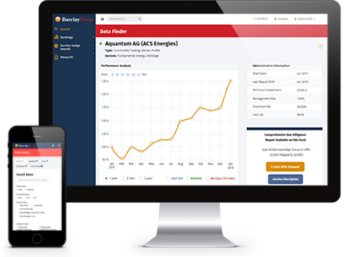by Eric C. Hage
The Core Strength of Convertible Arbitrage
The attractiveness of an arbitrage portfolio is that its performance profile is not based on forecasting market directions, but rather on an expected return to fair value of securities. However, many arbitrage strategies contain no driver for return to fair value, leaving the time frame for return to fair value highly uncertain and possibly very long. For example, long/short strategies, like the equities they hold, contain no time frame for valuation that would act as a forcing function for a process of return to fair value.
Convertible arbitrage is unique because, within a specified time frame, the investor is assured of a return to fair value when the convertible bond matures on a predetermined, typically short-term, date. Prior to maturity, the security may be redeemed by the issuer or converted by the holder into the underlying short stock position, or the underlying company may be acquired or become bankrupt, but in all events the convertible is paid fair value in cash relative to its offsetting stock hedge within an identifiable, typically short-term, time frame. As a result, convertible arbitrage is a lower-risk, buy-and-hold strategy that carries less uncertainty than other "relative value" hedge portfolios as to when and whether the "undervalued" security will trade to its fair value.
In addition, every convertible security is of a hybrid design that inherently controls risk by being diversified between bonds and equities. If the underlying stock depreciates, the bond depreciates less. If the stock price collapses, the bond price drops only to its straight-bond floor value. And if the stock goes to zero, the bond nevertheless retains some recovery value. Of course, any reduction in bond price also increases the current yield and yield to maturity of the bond.
The Events of 2008
In late 2008, forced selling and negative returns were the chicken and egg of convertible arbitrage accounts. The bankruptcy of Lehman brothers was the final straw that pushed investors to withdraw from convertarb funds in unison and mass. When investors attempted to liquidate simultaneously from highly leveraged convertarb funds, they destroyed demand for securities, prices of securities dropped precipitously, and returns turned sharply negative, reinforcing investor sentiment to fully redeem in a downward cycle. Large prime brokers made the situation worse by kicking out many convertible hedge funds and at the same time boosting margin requirements and raising borrowing costs on the remaining funds. Meanwhile the SEC restricted short selling and many lenders of stock pulled back from lending as the money markets froze. The high leverage and hedging techniques that many convertible hedge fund managers had relied upon for years were suddenly unavailable.
The Convertibles Recovery of 2009
December 2008 was the bottom for convertibles. Convertible prices had fallen to such depressed levels that many research reports were written about the tremendous value being created in convertibles starting in October 2008. It took a few months for sentiment to turn, but eventually, depressed prices attracted the attention of crossover buyers such as dedicated outright (non-hedge) convertible funds and high yield accounts. Issuing companies with excess cash began to aggressively buyback their convertible debt in the secondary market at distressed levels. In addition, a number of firms were successful in starting new dedicated outright convertible funds. The net effect was that in early January 2009, buyers began to outnumber sellers, outright investors began to outnumber hedge funds, and prices started to rise again. The rise in prices has been steady and strong through August 2009, with most surviving convertarb funds posting historic YTD returns of 30% or more.
An Educational Experience
The difficult events of 2008 should be highly educational for investors as to what can go wrong in convertarb. While several negative events took place in 2008, two risk factors should stand out most - leverage and investor commitment. The use of overly high leverage made many convertarb funds far too vulnerable to the effects of forced liquidation in a depressed market. The unwillingness of investors to recognize value and ride out the storm precipitated heavy short term losses, denying convertibles sufficient time to return to fair value.
The events of 2008 and 2009 should also tell investors why convertarb, when managed prudently by an experienced manager in cooperation with committed investors, works well as an arbitrage strategy. Most convertibles have relatively short maturities and often become close to pure fixed income securities when stock prices fall, so when the value in the market became obvious to many, they began to push prices back toward fair value and convertarb funds profited from the earlier move down in equity prices. In general, the combination of value and time wins out in the end, provided managers are prudent and investors are patient.
The Results of Recent Events
The convertibles market today looks much like it did in the mid 1990's when large volume originated from long-only investors and hedge funds were niche players, a market that is ideal for arbitrageurs. Large and lasting opportunity has amassed in this market as a result of (1) an exodus of investors and managers from the strategy, (2) cheap merchandise with historically wide credit spreads, and (3) new issues with high coupons and low premiums. Surviving convertarb funds and convertarb investors alike should closely examine what has happened over the past 12 months. Specifically, both should reexamine their previous ideas about how much leverage is prudent and how committed they are over time to realizing value in convertible arbitrage.
Get comprehensive and up-to-date information on 6100 + Hedge Funds, Funds of Funds, and CTAs in the Barclay Global Hedge Fund Database.


